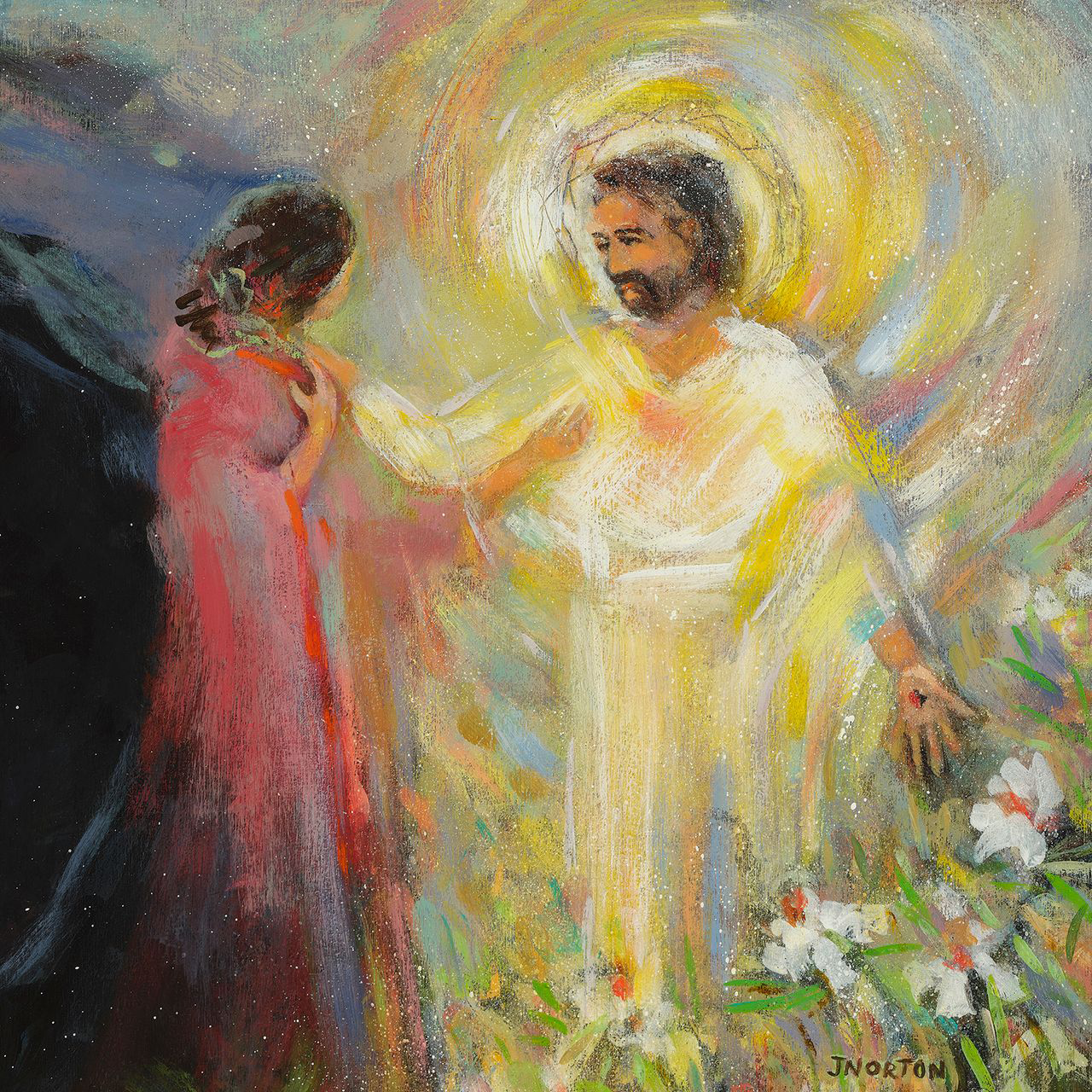Finding Resilience, Joy and Our Identity in Jesus Christ Intro/Lesson One

Lesson One: Mary Magdalene, the Tower
Scripture: John 20:11–18, John 11:17–27
Was Erasing Mary in John Intentional?
Did the scribe who altered and thus erased Mary the Tower’s name in John 11 do so by mistake or was it intentional? If it was on purpose, were the scribal erasers intended to diminish Mary’s authority?
There are stories of Mary instructing the disciples, and there are also stories of Peter and others challenging Mary. Traditions and stories about Mary the Tower describe her as a good disciple and a faithful leader.
In her research Dr. Elizabeth Schrader Polczer shows that sometime in the second century, a scribe altered the oldest text of the Gospel of John and split the character of Mary into two. Mary became Mary and Martha.
Only recently have hundreds of transcriptions of the Gospel of John been made available simultaneously online, so Schrader Polczer could view numerous manuscripts at once. Schrader Polczer states that there is a textual problem with Papyrus 66 (or P66), which is the world’s oldest near complete copy of the Gospel of John.
When she looked at P66, she was surprised to see that there were several places in the manuscript where the scribe changed Mary’s name to Martha in the Gospel of John. In John 11:27, Martha confesses Jesus as the Messiah. Schrader Polczer says that this was not Martha, but is Mary Magdalene. Thus, the woman who gives the major Christological confession in John is Mary Magdalene.
In Codex Alexandrinus, an early fifth century Greek manuscript, the scribe originally wrote, “There was a certain sick man, Lazarus of Bethany, the village of Mary his sister.”
Schrader Polczer states, “The first printing of the King James Bible has only one sister” (1611 KJV, John 11:3) and “we get the exact same reading in the 1526 Tyndale Bible and the 1591 Bishop’s Bible.”[1] Note that the textual problem is in the Gospel of John, not in Luke. Martha still exists in Luke 10:38–42.
Mary Ann Beavis writes, “. . . Luke’s observation that Mary was ‘the one called Magdalene’ ([Luke] 8:2) suggests that [Magdalene] (μαγδαληνη) was a nickname or title from the Aramaic magdala (‘Mary the Tower’ or ‘Mary the Great’).”[2]
Is it possible that some who saw this towering witness to the resurrection felt she was becoming too great and thus, tried to limit her authority? Does it change your viewpoint to learn that the Gospel of John gives the most important statement in the New Testament to a woman, who later is the first witness to the resurrection? Isn’t it significant that in all four Gospels Jesus appeared to Mary the Tower first?[3]
In apocryphal literature (these are books that did not make it into the Biblical canon), there is a conflict between Mary the Tower and Peter. After Jesus’ death, the disciples were weeping and despairing, until Mary stands up saying, “do not your hearts be irresolute. For his grace will be with you all and will shelter you.”[4] They rally, at least momentarily, and discuss Jesus’ word.
In the Gospel of Mary Magdalene, Peter challenges Mary, and Levi comes to her defense saying, “Peter, . . . now I see you contending against the woman like the Adversaries. For if the Savior made her worthy, who are you then for your part to reject her? Assuredly the Savior’s knowledge of her is completely reliable. That is why he loved her more than us.”[5]
While this is apocryphal literature, these are sources that indicate that there was a conflict between Mary and Peter, which may explain why some may have wanted to discredit her.
The PW Bible study explores recent women’s biblical scholarship and highlights models of resilience, joy and our identity in Jesus Christ. Mary, the Tower is a model of resilience. While some have diminished Mary, she was known as a witness to Christ and a tower of faith whom we should pay attention to, as she leads us to “the Messiah, the Son of God, the one coming into the world.”[6]
By Rev Dr. Rhashell D. Hunter
Author of the 2025–2026 PW/Horizons Bible study, Finding Resilience, Joy, and Our Identity in Jesus Christ.
Notes:
[1] Elizabeth Schrader, “Women Erased: Mary Magdalene and the Gospel of John with Elizabeth Schrader,” Future Church, posted on August 26, 2021, YouTube video, 1:04:37, https://youtube.com/watch?v=_b3Y3cJ0Ic8.
[2] Mary Ann Beavis, “Reconsidering Mary of Bethany,” Catholic Biblical Quarterly, April 2012, Vol 74, Issue 2, 286–87.
[3] See John 20, Matthew 28, Mark 16 and Luke 24.
[4] See the Gospel of Mary (also known as the Gospel of Mary Magdalene), 5:5-6.
[5] Gospel of Mary, 10:7b-10.
[6] John 11:17-27.
************
This blog is the first in a series of nine blogs.
Finding Resilience, Joy, and Our Identity in Jesus Christ is the Presbyterian Women in the PC(USA), Inc. Bible study for 2025–2026. Go to presbyterianwomen.org/bible-study/resilience to find more resources and copies for you and your group to study along with us. Call 800/533-4371 or order online.
